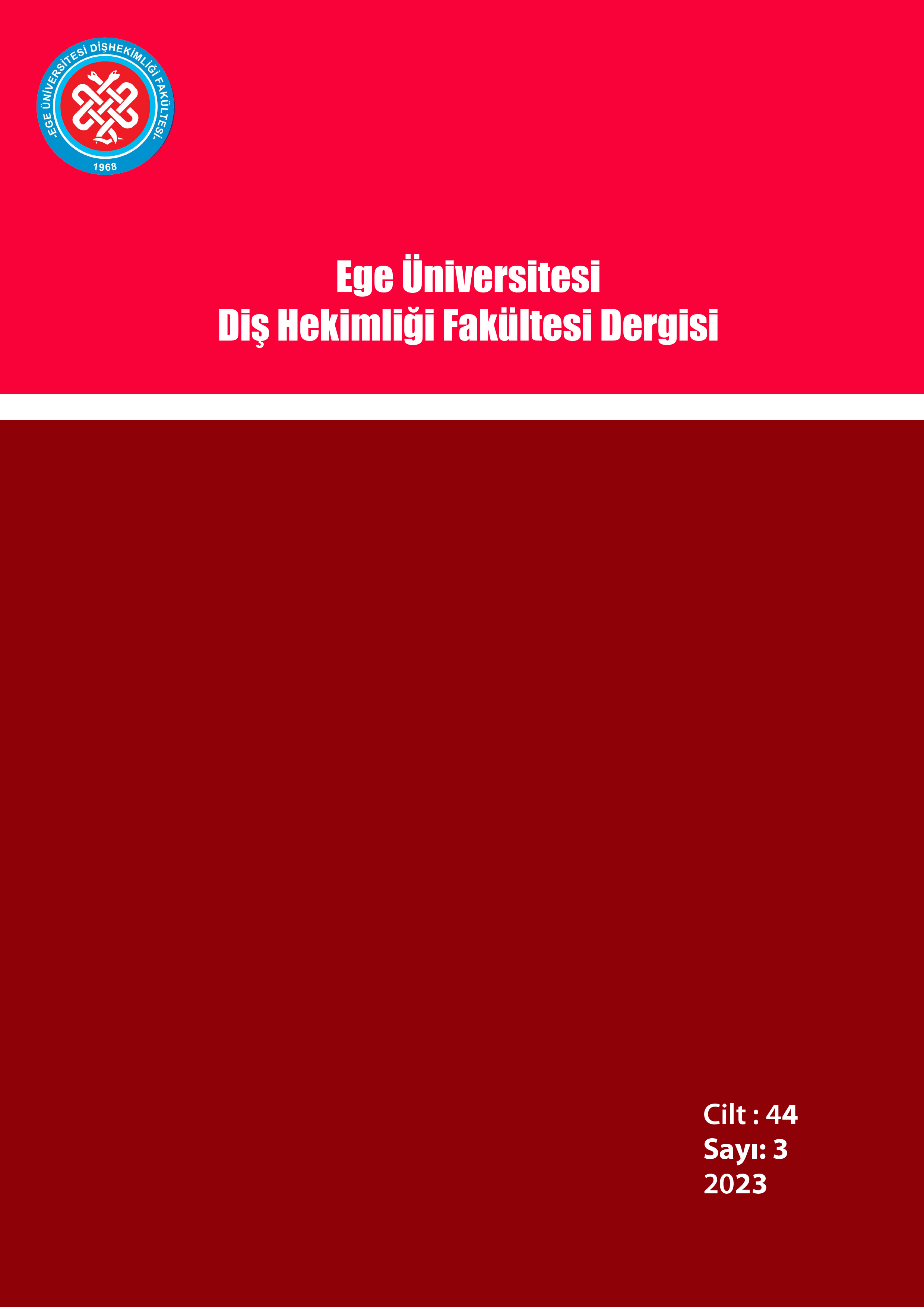
Bu eser Creative Commons Alıntı-GayriTicari-Türetilemez 4.0 Uluslararası Lisansı ile lisanslanmıştır.


Farklı Oranlarda Polipropilen Fiber İlaveli Akriliklerde Transvers Direnç Ve Yüzey Pürüzlülüğünün İncelenmesi
Faik Tuğut1, Mehmet Emre Coşkun1, Derya Özdemir Doğan1, Türker Akar2, Ümit Güney11Cumhuriyet Üniversitesi Diş Hekimliği Fakültesi, Protetik Diş Tedavisi Anabilim Dalı, Sivas2Beyaz Dünya Ağız Ve Diş Sağlığı Polikliniği, Sivas
GİRİŞ ve AMAÇ: Bu çalışmanın amacı ısı ile polimerize olan akriliklere farklı oranlarda polipropilen fiber ilave edilerek akriliğin transvers direnç ve yüzey pürüzlülüğü yönünden incelenmesidir.
YÖNTEM ve GEREÇLER: Çalışmada ısı ile polimerize olan akrilik tozu içerisine ağırlıkça % 1,3,5,10 ve 20 oranlarında polipropilen fiber ilave edildi. Transvers direnç testi için 65 x 10 x 2.5 mm boyutlarında, yüzey pürüzlülük için 10x2 mm boyutlarında örnekler hazırlandı. Her bir test için kontrol grubu dahil toplam 6 grup oluşturuldu. Transvers direncinin tespiti için örnekler Lloyd Universal test cihazına aktarıldı. Örneklerin kırılan yüzeyleri SEM altında incelendi. Yüzey pürüzlülük örnekleri de profilometre cihazında ölçülerek veriler elde edildi.
BULGULAR: Pürüzlülük ve direnç testlerindeki istatistiksel analiz, test grupları arasında anlamlı fark olduğunu gösterdi (p<0.05). En yüksek transvers direncin % 5 polipropilen ilaveli akriliklerde bulundu. %5’lik konsantrasyonun üzerinde transvers direncin düştüğü görüldü. Yüzey pürüzlülüğünde ise konsantrasyon artışı ile pürüzlülüğün arttığı görüldü.
TARTIŞMA ve SONUÇ: Polipropilen elyaf ilavesi akriliklerin mekanik özelliklerini arttırdığını ve en iyi direnç sağladığı konsantrasyonda pürüzlülük değerinin fazla değişmediği görüldü. Bu sebeple PMMA esaslı protez kaide materyallerine ilave edilerek güçlü bir rezin sistemi oluşturulabilir.
Investigation Of Transverse Strength And Surface Roughness Of Different Ratio Of Polypropylene Fiber İn Acrylic Resins
Faik Tuğut1, Mehmet Emre Coşkun1, Derya Özdemir Doğan1, Türker Akar2, Ümit Güney11Cumhuriyet University Faculty Of Dentistry, Department Of Prosthodontics, Sivas, Turkey2Beyaz Dünya Oral And Dental Health Clinic, Sivas, Turkey
INTRODUCTION: The purpose of this research was to evaluate the effect of different ratio of polypropylene fiber added to denture base material on surface roughness and transverse strength.
METHODS: Specimens were prepared by the mixture of heat cure acrylic resin and polypropylene fibers at different ratios (1,3,5,10,20 %) according to the manufacture’s directions. 6 groups include control group were formed for each tests. Rectangularly shaped (65 × 10 × 2,5 mm) patterns were prepared for transverse strength test and 10x2mm patterns were prepared for surface roughness test. Transverse strength tests were performed by Llyod universal test machine and broken surface of specimens were analysed by SEM. Surface roughness tests were performed by profilometer and the results were statically analyzed
RESULTS: The statically analyse of roughness and strength test were found statistically significant difference between groups (p<0.05). The 5% polypropylene group had the highest transverse strength and decrease with the increase of polypropylene ratio. Surface roughness was increased parallel with the increase of concentration.
DISCUSSION AND CONCLUSION: Adding polypropylene fibers in acrylic resins improve mechanical properties and do not alter the roughness at the best resistance of concentration. For this reason polypropylene can be used to improve mechanical properties of PMMA.
Sorumlu Yazar: Faik Tuğut, Türkiye
Makale Dili: Türkçe



